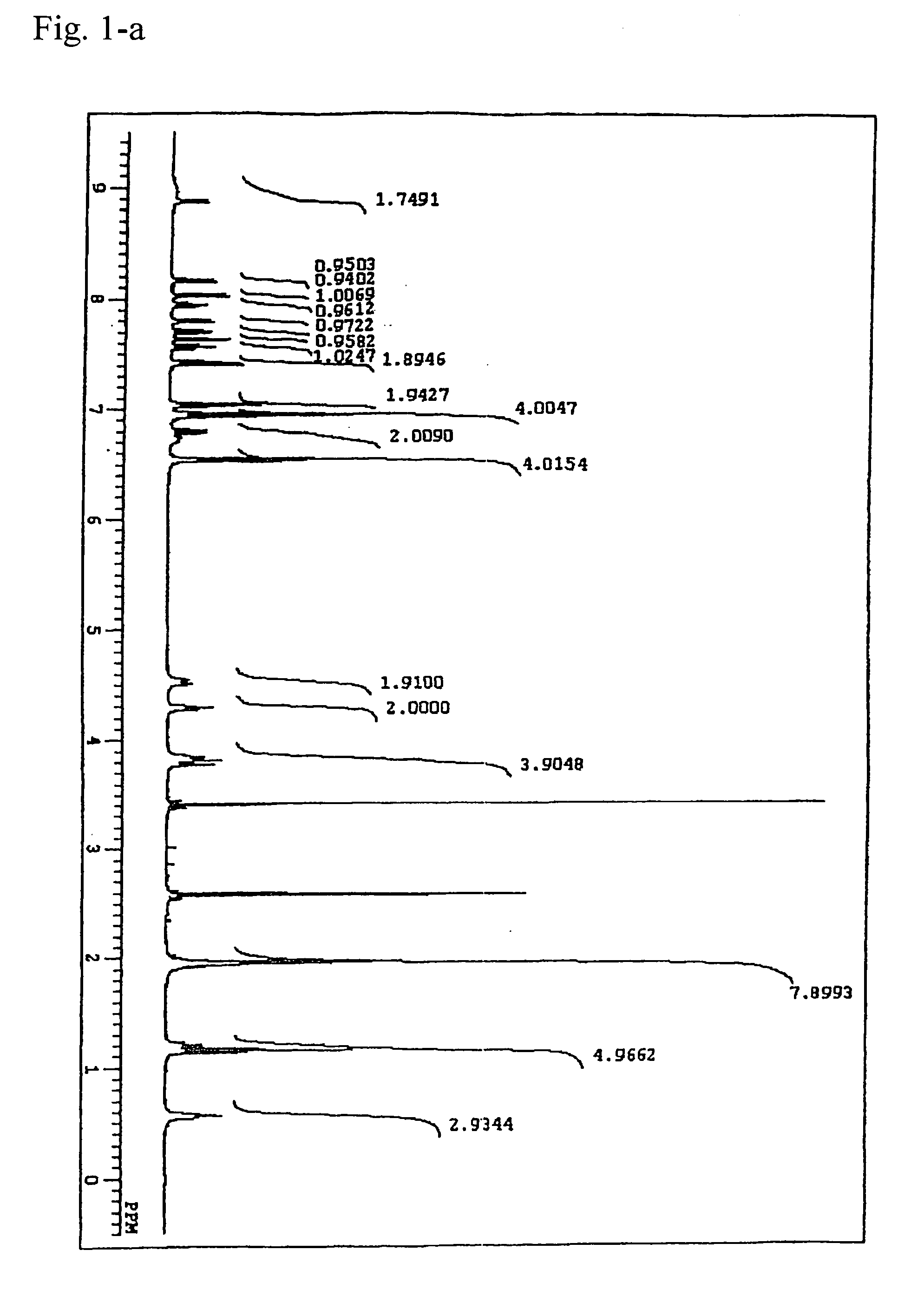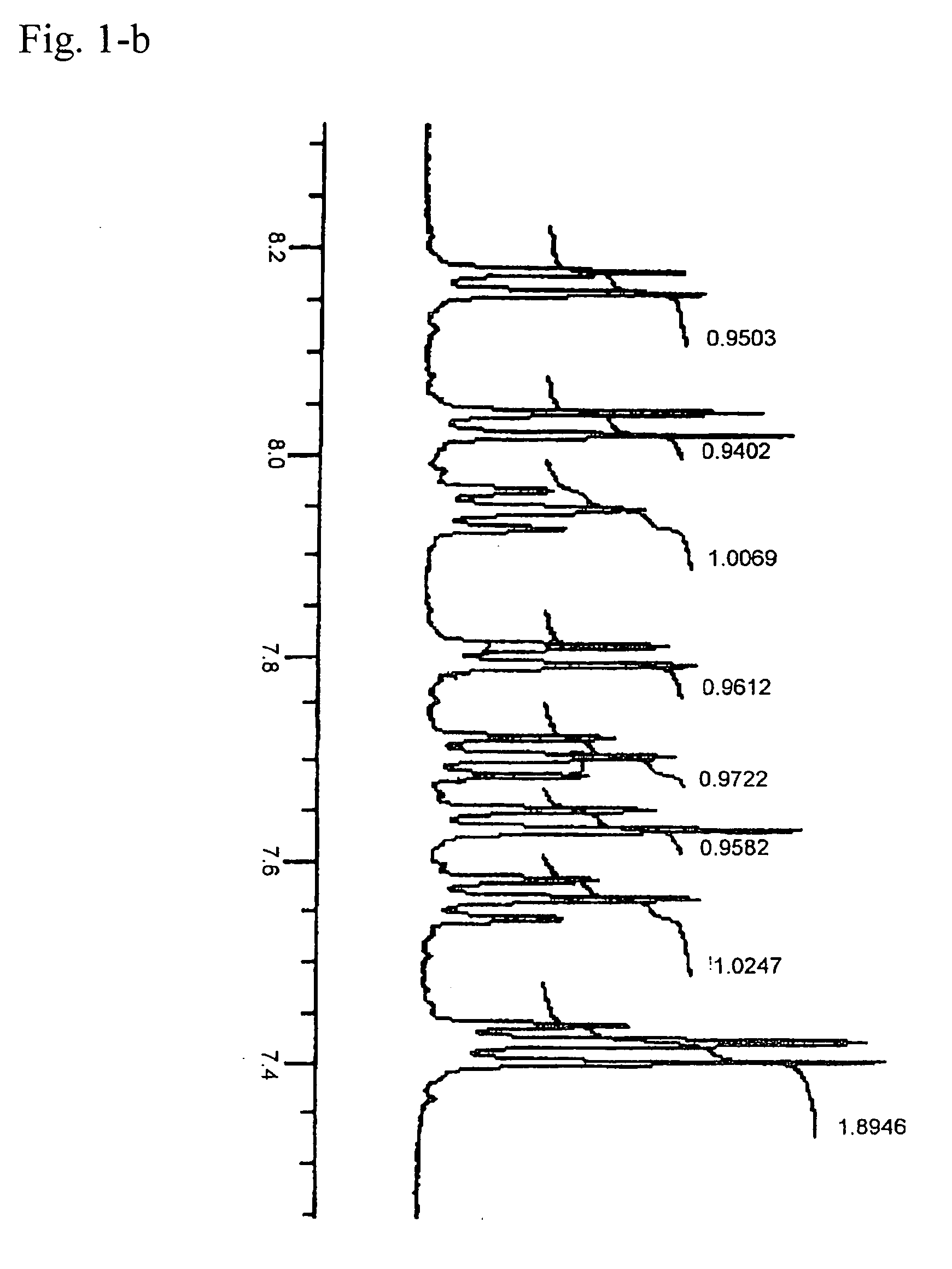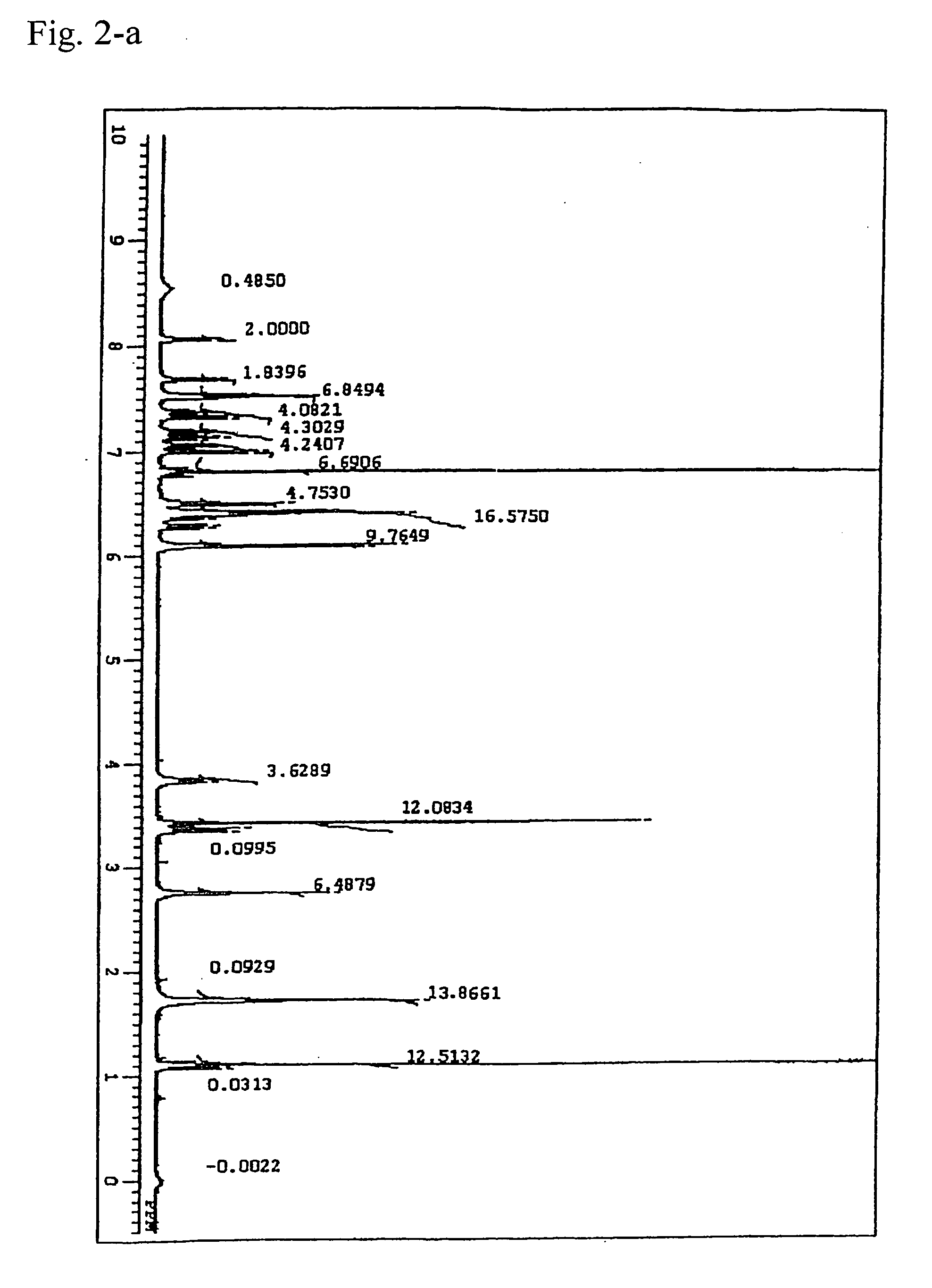Cyanine compounds, optical recording materials and optical recording media
a technology of optical recording media and cyanine compounds, which is applied in the field of cyanine compounds, can solve the problems of unsatisfactory thermal decomposition characteristics of other known cyanine compounds and unsatisfactory cyanine compounds described in references 1 to 4
- Summary
- Abstract
- Description
- Claims
- Application Information
AI Technical Summary
Benefits of technology
Problems solved by technology
Method used
Image
Examples
preparation example 1
Preparation of Hexafluorophosphate of Compound No. 10
(a) Synthesis of Indole Derivative
[0040] In a reaction flask were put 158.2 g of naphthylhydrazine, 286.0 g of 1,1-dibenzylacetone, and 542 g of ethanol and stirred at 70° C. for 1 hour. To the mixture was added dropwise 125 g of a 35 wt % hydrochloric acid aqueous solution at 70° C., followed by allowing the mixture to react at 80° C. for 1 hour. After cooling to room temperature, 200 g of toluene was added, and the reaction mixture was washed with three 300 g portions of water and dried over anhydrous sodium sulfate. The resulting solution was freed of the solvent, and the residue was purified by silica gel chromatography to give 40.0 g (yield: 11.1%) of an indole derivative having benzyl groups as brown liquid.
(b) Synthesis of Intermediate Compound
[0041] In a reaction flask were put 18.7 g of the indole derivative prepared in (a) above, 12.8 g of 1-propane iodide, and 39.9 g of propanol and allowed to react at 100° C. for...
preparation example 2
Preparation of Hexafluorophosphate of Compound No. 12
(d) Synthesis of Intermediate Compound
[0047] In an autoclave were put 18.7 g of the indole derivative prepared in Preparation Example 1, 10.7 g of methyl iodide, and 38 g of methanol and allowed to react at 100° C. for 12 hours. The reaction system was freed of the solvent, and the residue was dissolved in 5.0 g of ethanol while hot. To the solution was added 50 g of butyl acetate for crystallization. The crystals were collected by filtration and dried in vacuo at 80° C. for 2 hours to give 5.5 g of an intermediate compound in a yield of 21.9% as yellow crystals.
(e) Synthesis of Cyanine Compound
[0048] Into a reaction flask were charged 2.52 g of the intermediate compound prepared in (d) above, 2.49 g of intermediate compound B shown below, 1.53 g of acetic anhydride, and 7.91 g of pyridine, and the mixture was allowed to react at 50° C. for 4 hours. To the reaction mixture were added 16 g of chloroform and a solution of 1.65...
preparation example 3
Preparation of Hexafluorophosphate of Compound No. 19
(f) Synthesis of Intermediate Compound
[0053] In a reaction flask were put 16.2 g of a starting material of formula shown below that was obtained by condensation of N-methyl-N-(4-chlorophenyl)hydrazine and 4-phenylbutan-2-one, 13.4 g of benzyl bromide, and 26.5 g of ethanol and allowed to react at 75° C. for 14 hours. To the reaction mixture was added 60 g of ethyl acetate, followed by refluxing for 30 minutes. The crystals thus formed were collected by filtration, washed with ethyl acetate, and dried in vacuo at 80° C. for 2 hours to give 19.0 g of an intermediate compound in a yield of 71.8% as white crystals.
(g) Synthesis of Cyanine Compound
[0054] Into a reaction flask were charged 6.92 g of the intermediate compound prepared in (f) above, 1.54 g of N,N′-diphenylamidine, 2.40 g of acetic anhydride, and 12.42 g of pyridine, and the mixture was allowed to react at 78° C. for 4 hours. To the reaction mixture were added 25 g ...
PUM
| Property | Measurement | Unit |
|---|---|---|
| thickness | aaaaa | aaaaa |
| temperature | aaaaa | aaaaa |
| temperature | aaaaa | aaaaa |
Abstract
Description
Claims
Application Information
 Login to View More
Login to View More - R&D
- Intellectual Property
- Life Sciences
- Materials
- Tech Scout
- Unparalleled Data Quality
- Higher Quality Content
- 60% Fewer Hallucinations
Browse by: Latest US Patents, China's latest patents, Technical Efficacy Thesaurus, Application Domain, Technology Topic, Popular Technical Reports.
© 2025 PatSnap. All rights reserved.Legal|Privacy policy|Modern Slavery Act Transparency Statement|Sitemap|About US| Contact US: help@patsnap.com



